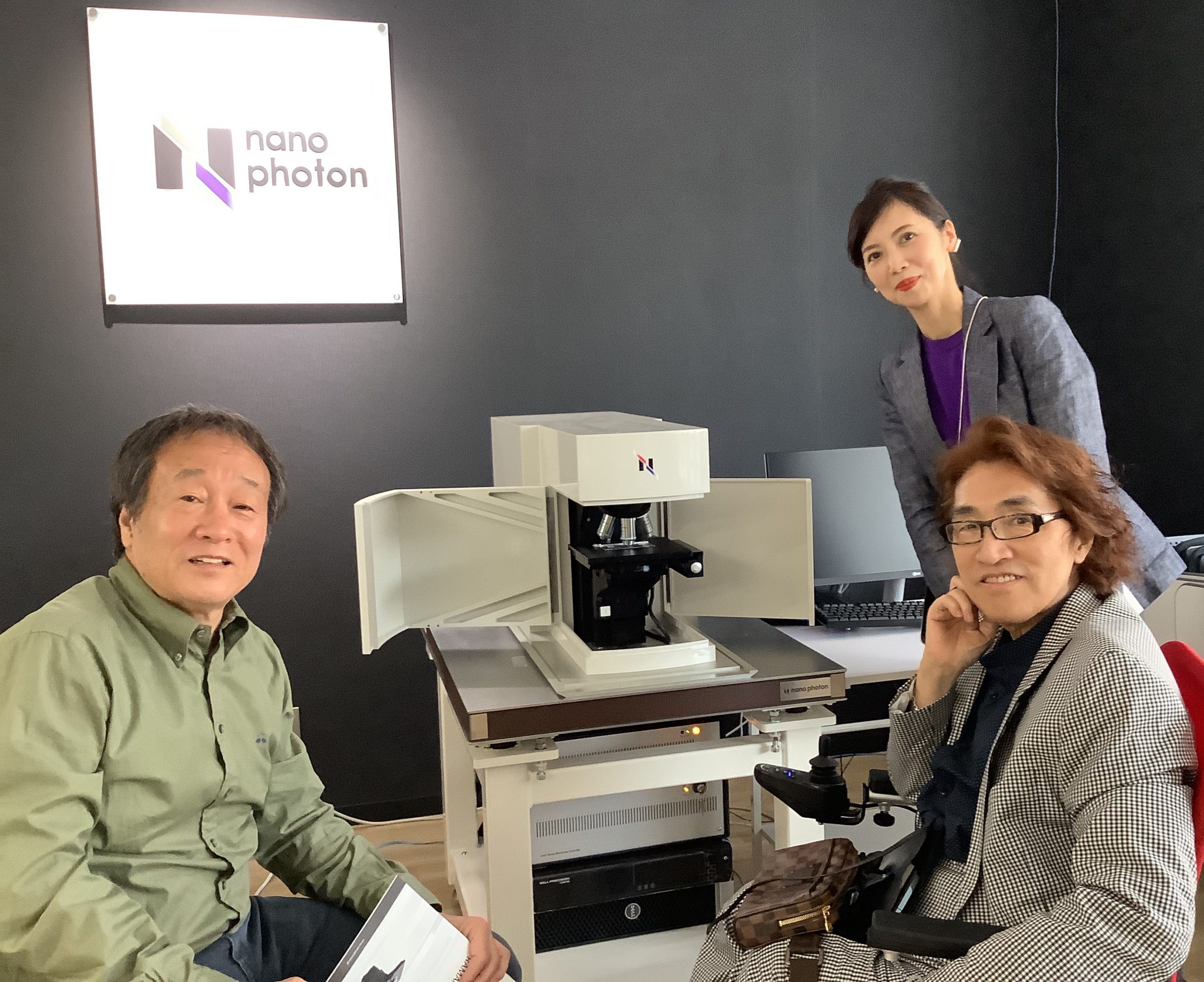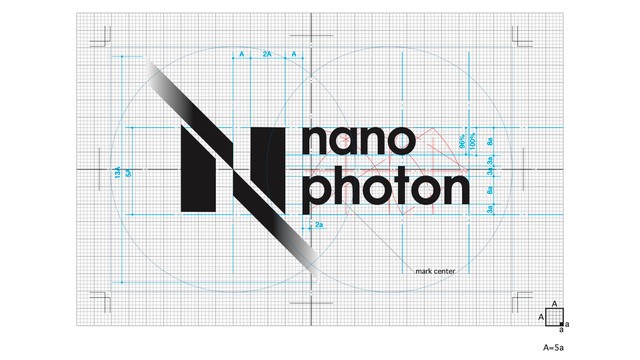Email Magazine
Interview (5/12/2021)
The Nanophoton mark and logotype were created by designer Kazuo Kawasaki (72). For me, Mr. Kawasaki is the author of a column in the Mac magazine “MACPOWER” that I loved reading when I was a student. Although I don’t remember much of the details, I have a strong impression that he was an amazing person. About 25 years later, when I heard his name, I immediately thought of him as the author of that column. This time, he agreed to be interviewed remotely, and I was thrilled to talk to him. (e-mail Newsletter editor-in-chief / freelance writer Takeshi Nemoto)
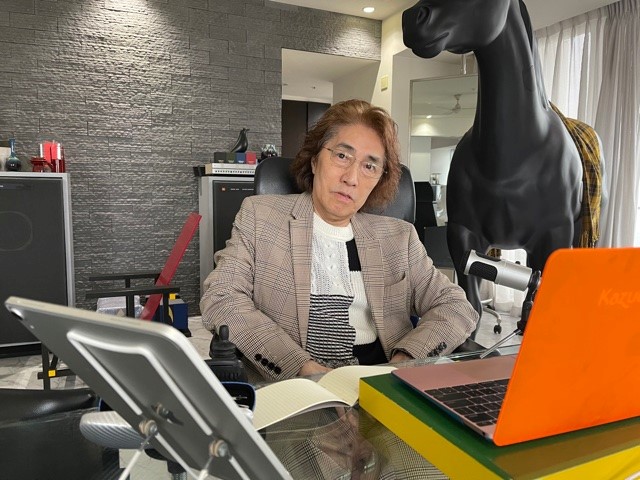
Designer, Ph.D., Professor Emeritus…..
Dr. Kawasaki is a design director, doctor of medicine, professor emeritus at Osaka University, and professor emeritus at Nagoya City University. He was born in Fukui City. After graduating from Kanazawa College of Art, he joined Toshiba Corporation and entered the world of industrial design.
In 1978, at the age of 28, he was involved in a traffic accident that left him in a wheelchair, marking a turning point in his career. 1979 saw him go freelance, and after that he took on a variety of challenges, including the fusion of Fukui’s traditional crafts and industrial design, winning numerous awards including the Mainichi Design Award. Since 1996, he has been a professor at the newly established Graduate School of Art and Design, Nagoya City University, where he received his doctorate in medicine in 1999.
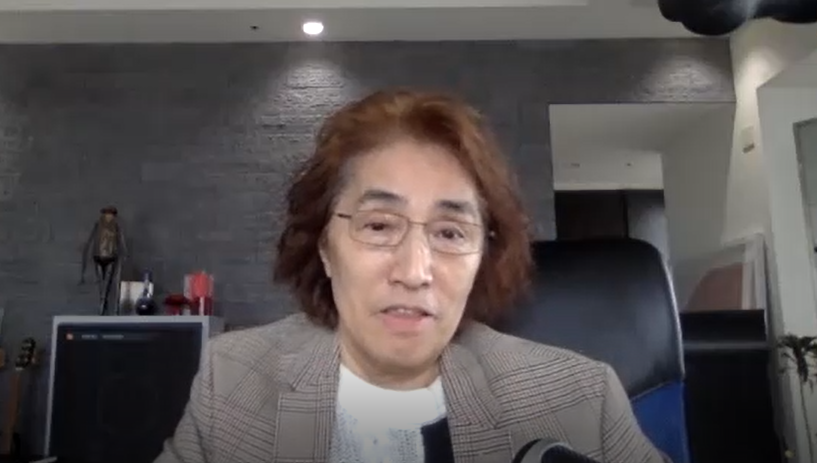
I met Satoshi Kawata, Chairman of Nanophoton, when Mr. Kawasaki was a professor at Nagoya City University. At the time, Dr. Kawata was a professor at the Graduate School of Engineering, Osaka University. In 2001, the Graduate School of Engineering established the Frontier Research Organization, and Chairman Kawata, the first director of the organization, asked Dr. Kawasaki to become a special-appointment professor in order to establish the field of design science and engineering.
Mr. Kawasaki recalls.
The first thing I thought was, “What is a special appointment professor? I didn’t worry about whether I would go to Osaka University or not, but I think I talked about what I should do there. Professor Kawata also said to me, ‘I’m doing research on microscopy, but I’m also going to do the optical modeling that you’re doing, so let me know.
Optical molding is what we now call a 3D printer. Mr. Kawasaki’s thesis, which was approved by the M.D., was “Basic Morphological Design of a Total Replacement Artificial Heart Using the Optical Modeling System. It was a research to design an artificial heart and make a model of it using the optical modeling system. His heart was not functioning well due to the accident, and he wanted to make his own artificial heart.
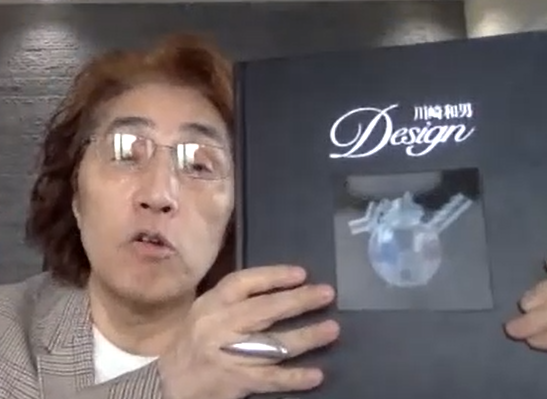
“I had originally applied to medical school. However, when I was an unemployed student, I became disgusted with the idea of becoming a doctor, and when I talked to my mother about it, she said, ‘You’re not cut out to be a doctor. When I talked to my mother about it, she said, “You’re not cut out to be a doctor.” She also said, “There’s only art school or music school. My mother said to me, ‘It’s more fun to see red paint than to live with red blood.
At Osaka University
From 2015 to 2018, I served as a special professor in the “Consilience Design Endowed Chair in Endocrinology and Biomedical Engineering” at the Graduate School of Medicine, Osaka University, and I have continued to interact with Chairman Kawata to this day. I have been in contact with Dr. Kawata since then.
“Dr. Kawada can write papers, and he also makes things. He is very soft and understands design. Other top-notch professors at Osaka University included Professor Hiroshi Ishiguro in robotics research and development and Professor Yoshiki Sawa in cardiovascular surgery. I thought I had come to a great university.
Mr. Kawasaki, Chairman Kawata, and Professor Sawa attend a press conference together in July 2016. This was the announcement of the “Deep Ultraviolet Sterilization Device,” which was the result of research and development by design, engineering, and medical departments. At the time, Dr. Kawasaki was a specially-appointed professor at the “Consilience Design Endowed Chair in Nursing and Medical Engineering” (Graduate School of Medicine), which promotes product development through collaboration among design, nursing, health science, medicine, and engineering.
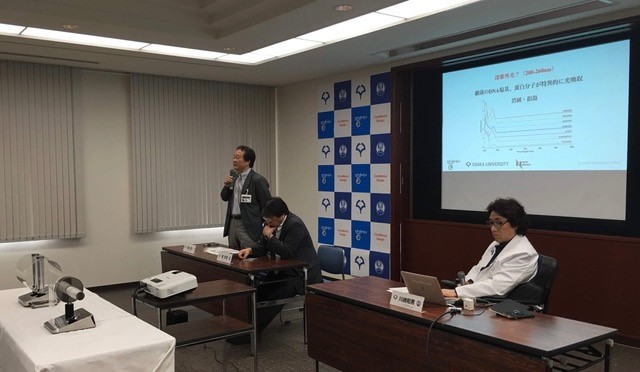
This deep ultraviolet sterilization device was developed as a device that can sterilize and disinfect the skin by applying deep ultraviolet light only to the surface of the skin when held by hand.
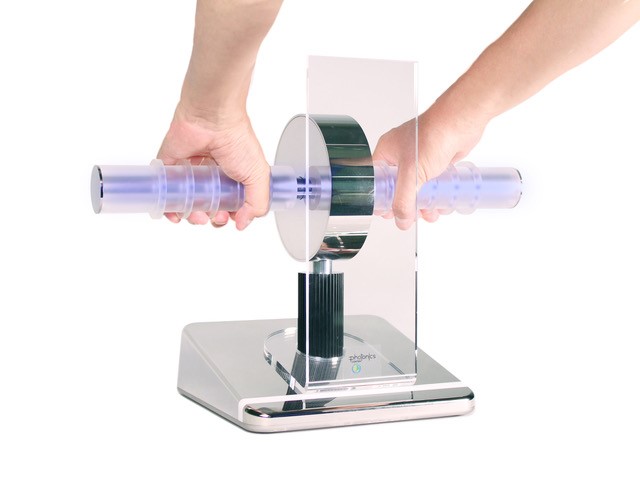
Now that COVID-19 is over, Mr. Kawasaki is once again focusing on deep ultraviolet light.
“I’d like to see Dr. Kawata make a device that can disinfect the whole body with deep ultraviolet light. We are a microscope company, but I think we can do it.
Design is Problem Solving
By the way, how do you see the design world today?
“In the design field, especially in industrial design, which is what I do, there are very few science majors, and I think that’s bad for the profession. You have to be able to do differential and integral calculus. You would have to be a science major to design a car. Artistic anatomy, ergonomics, and HUSAT (Human Science and Advanced Technology) are also important. I’m designing eyeglasses right now, and you need to understand the anatomy of the human body.

“Design is problem solving and conundrum solving. “Design is problem solving and conundrum solving, not decorating. It’s always about invention. That’s why I often ask Professor Kawada, “Do you have any inventions? I often ask him, “Do you have any inventions? He answers, “Yes, I do.
Although Mr. Kawasaki and Mr. Kawata have different areas of expertise, I believe they understand and communicate with each other on a fundamental level.
◇
Later, Mr. and Mrs. Kawasaki visited Nanophoton and toured our Osaka showroom. Here are some photos from that visit.
